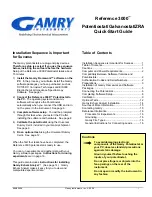
When you turn the Harmonizer, you will notice different letters appear in the Key
Designator window. These letters represent the names of the
major keys
.
In modern western music the diatonic scale pattern is the basis for fifteen major
keys. Each of these keys begins on a different note. The note that begins a key
becomes the name of that key.
The key of C major is an example of one such key. When we start playing a dia-
tonic scale pattern beginning with C, the result is C, D, E, F, G, A, B and C.
When we repeat the beginning note of the scale we have played an
octave
. An
octave is the tonal distance between two notes with the frequency of the higher
note being twice that of the lower.
Diatonic Scale vs. Chromatic Scale
In our western music culture there are twelve tones between each octave. This
series of twelve tones is called a
chromatic scale
. The distance between each
tone of a chromatic scale is called a half step. Two half steps make a whole step.
There are, of course, six whole steps in an octave. Below is a chromatic scale
beginning and ending on C.
In the above example the scale begins and ends on C. If we wanted, we could
repeat the sequence of tones to higher or lower octaves. The tones that make up
the octave have been given letter names (A, B, C, D, etc.). Sometimes a single
tone is called by two different names, i.e., C> and D<, D> and E<
.
C
C
>
D
<
D
>
E
<
F
>
G
<
G
>
A
<
A
>
B
<
w
h h
h
h
h
h h h h h
h h
w
w
w
w
w
D
E
F
G
A
B C
C Chromatic scale
1.
Key Designator
Major & Minor Scales
6
w = whole step
h = half step
Major & Minor Scales
The most important scale used in pop, jazz, country, rock, and classical music today is a
7-note scale called the
diatonic major scale
. This section describes the diatonic scale
and other musical concepts associated with it, including
modes
,
chords
, and
intervals
.
The second most important scale is the
natural minor scale.
This scale is derived from
the diatonic major scale and shares the same notes and chords.
The diagram on the opposite page shows the Major and Natural Minor Scales section of
the Harmonizer. The topics related to this section are indicated by number and are then
described in the following pages of the guide.
6 whole steps
12 half steps







































